Following the restrictions placed on us all by the pandemic, second year Books & Paper conservation students recently enjoyed much-anticipated site visits to a leather tannery, leather conservation centre and The National Archives. Student Ana Sofia Drinovan describes the visits and how they supported their studies.
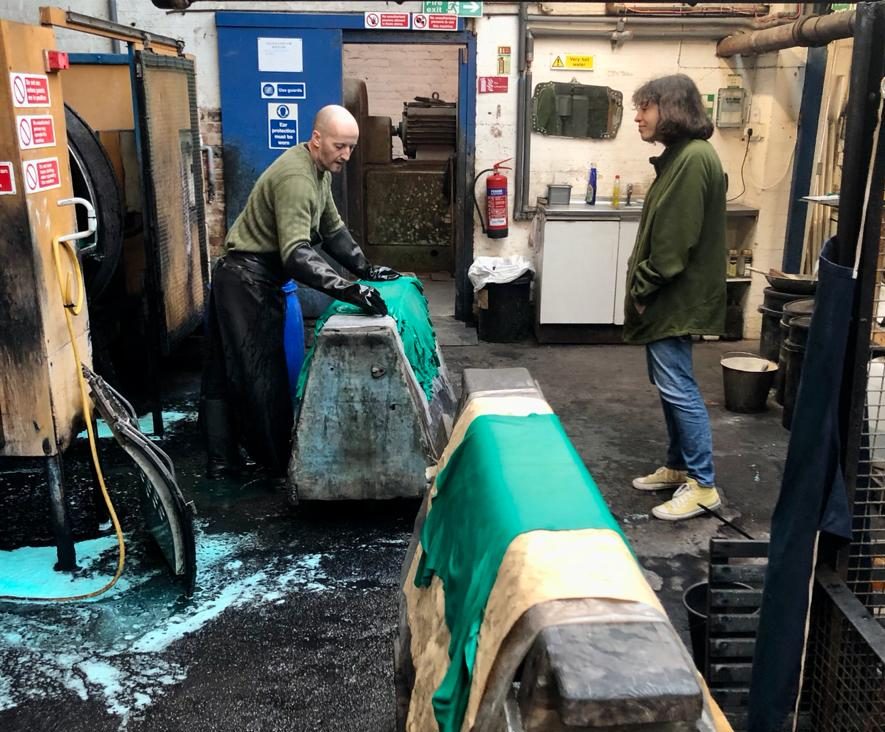
After doing our best to ride the waves of the pandemic for the first year and a half of our course, our cohort, the second year of BA (Hons) Conservation: Books & Paper, embarked on a trip to Rushden and Northampton. This trip up north would be to Harmatan Leather Ltd and the Leather Conservation Centre, a trip made doubly exciting by it being our first ever excursion as a class. There’s something indefinably special about piling into a coach for an outing with classmates you first got to know through little video squares online.
Set in the calm and quiet streets of Rushden, Harmatan Leather surprised us by fitting right in. Marc Lamb came to greet us and invited us into the heart of the business, a high-ceilinged workspace with skins stretched to dry in green and blue, white leather in a pile waiting to be processed, and employees working with vats towards the back of the space. When we remarked that there was a distinct lack of the powerful smells typically associated with leathermaking, we learned that this was because Harmatan imports leather already treated in India and re-treats them with their own recipes and dyes.
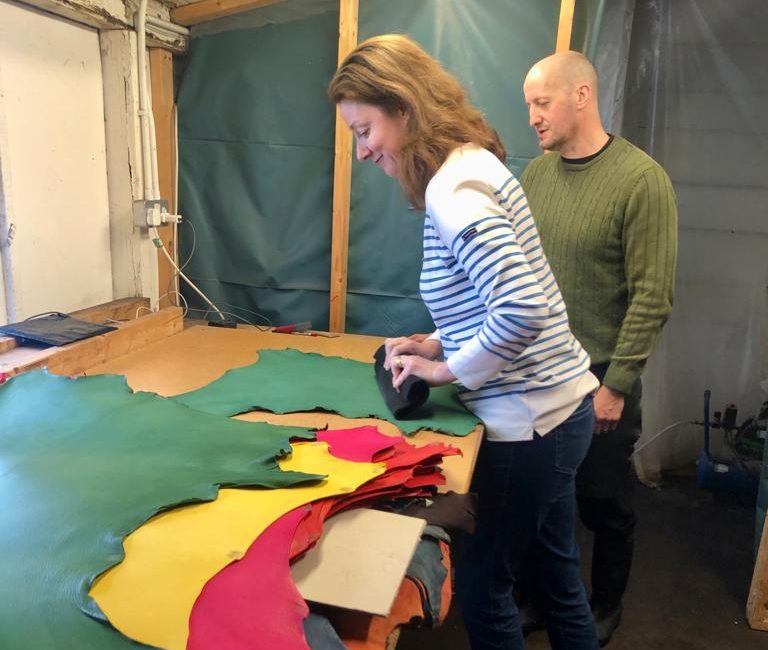
We were then shown how the dry leather is treated with a layer of casein and rubbed down; some of us had a go at smoothing the surface of a hot pink piece of leather. Harmatan provides leather to clients of all kinds, from bookbinders to interior designers, and the array of colours and types of leather they make was very impressive. One of my favourite features of the work at Harmatan were some gloriously complex and charmingly designed machines that have been a legacy of the business in decades past but still serve a staunchly practical purpose, like the pistachio-and-pink machine of dozens of metal pins finely calibrated to measure the thickness of any piece of leather inserted. It was a fascinating visit, rounded off by a very welcome sandwich lunch!
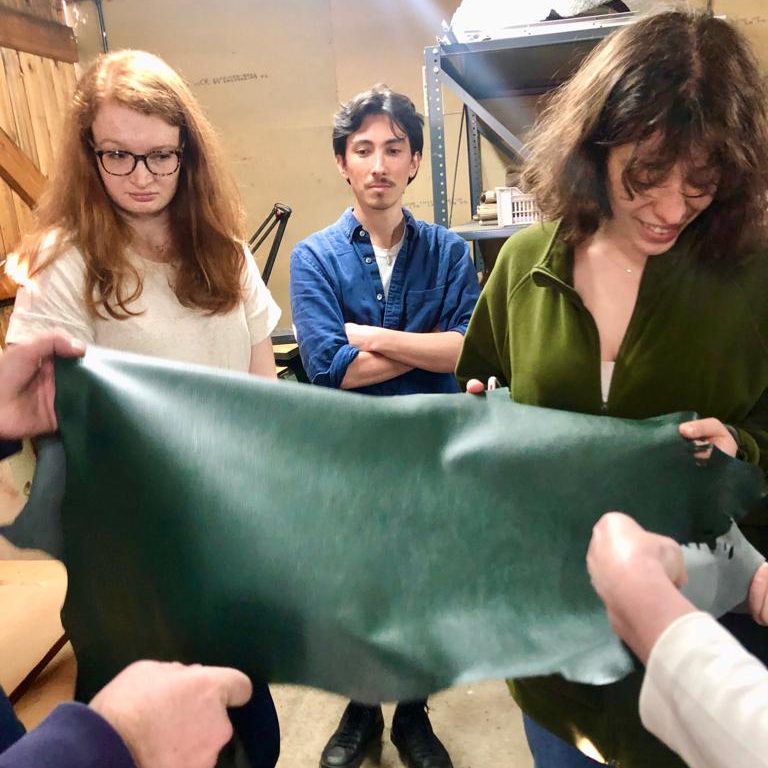
Our next stop that day was the Leather Conservation Centre in Northampton. We were dropped off and then led up some stairs, and when we emerged we were in a room overlooking the city, being introduced to Rosie Bolton and Arianne Panton. We pored over a collection of the leathers from a bewildering array of animals, from chicken to crocodile, and then we were shown into the studios, where conservators were working on a wonderful range of objects: a leather folding screen, a makeup case, even a globe cover. Each of the materials we learn to use on our course constitutes a world unto itself, and this pair of visits was a dizzying look into all the possibilities of leather.
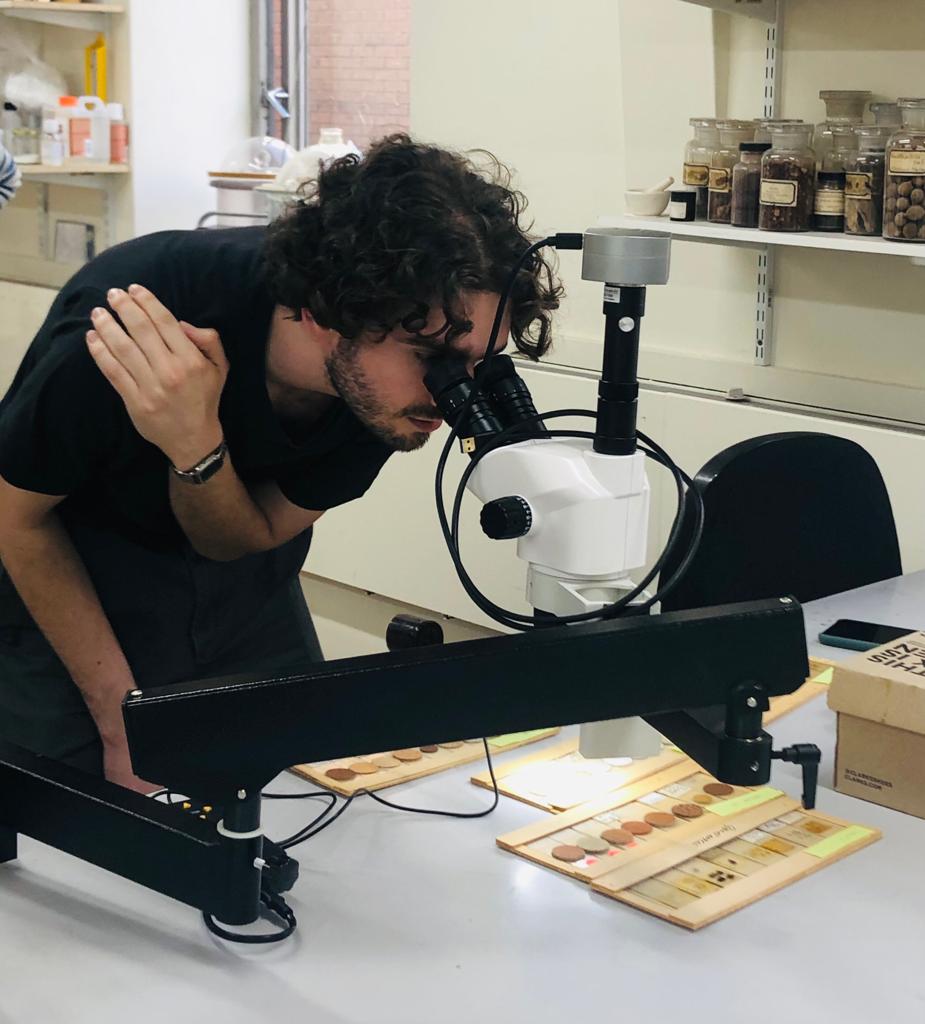
The next day, our class met in the sun-filled forecourt of The National Archives in Kew. Sonja Schwoll came to meet us and took us to the conservation studio, where conservators were at work on items from the archive. Katerina Williams received us and told us all about the conservation department’s current projects, and after showing us an amazing collection of ledgers from as early as the 15th century, our class collaborated to enter information about one of the ledgers into a database that was in the process of being created for those particular manuscripts.
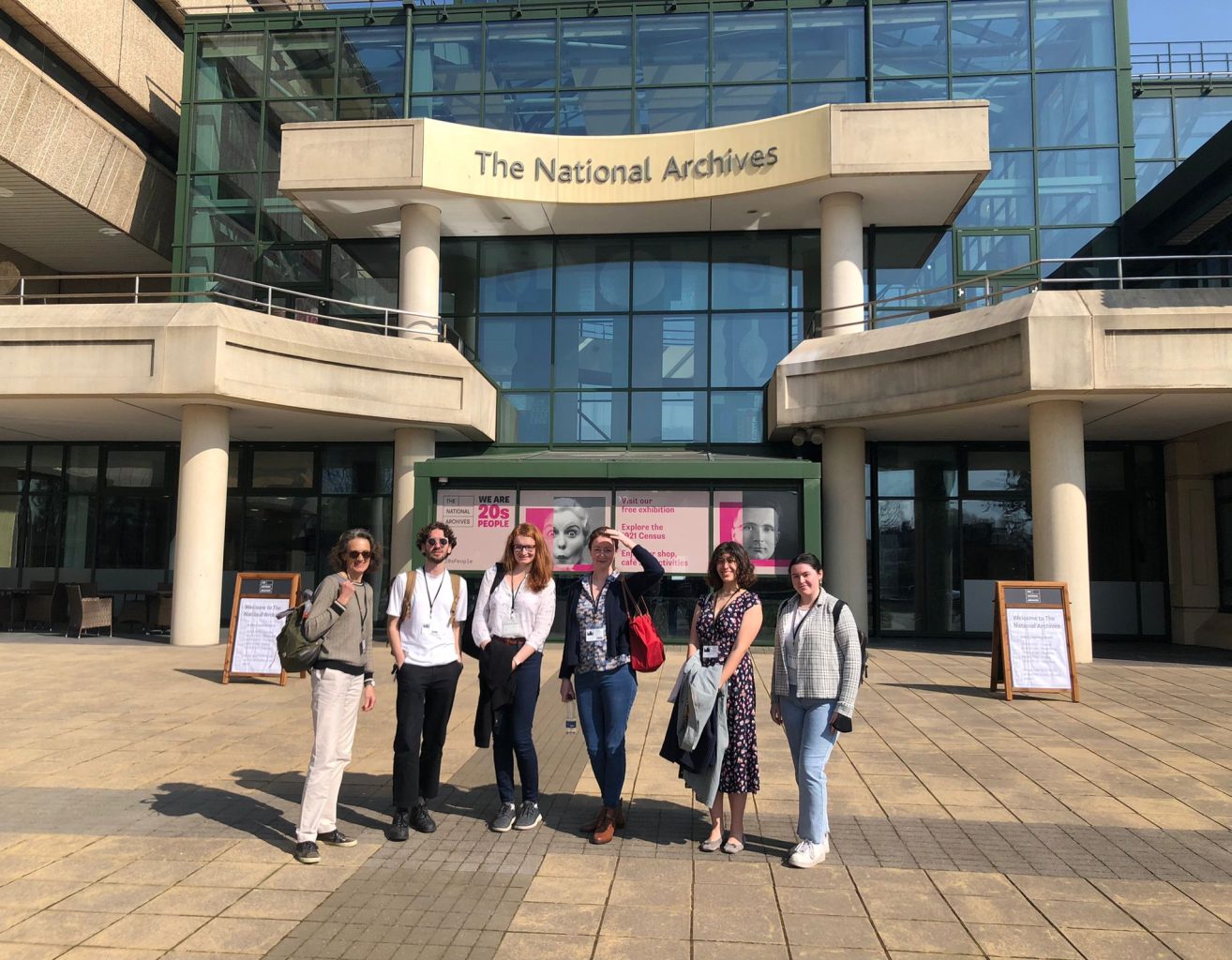
One of the most delightful parts of the day consisted of some of the conservators in the studio showing us around their workbenches and their own current projects. Helen Mayor showed us a collection of architectural prints and drawings showing views of Whitehall through the ages. Alison Archibald had been at work on a legal document with many wax seals dangling from its lower edge; we were all very taken with the Tyvek fleece enclosures she had devised to protect each and every one of the seals. Each conservator had their own way of keeping their space organised, and there was a very particular pleasure to be had in asking about the various tools that we saw they were using! We learned even more from Ioannis Vasallos, who showed us photographs from the collection and some of the analytical and conservation techniques they employ, and we also heard presentations on the Archives’ latest digitisation project and the importance of engagement.
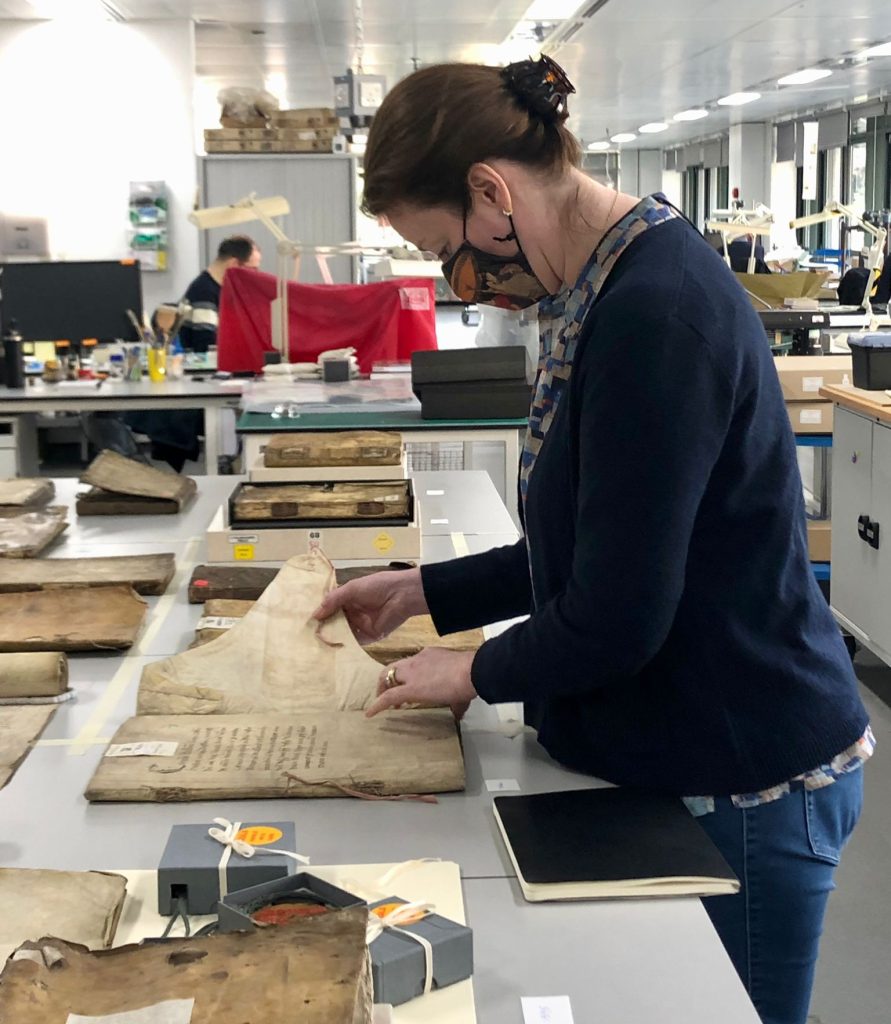
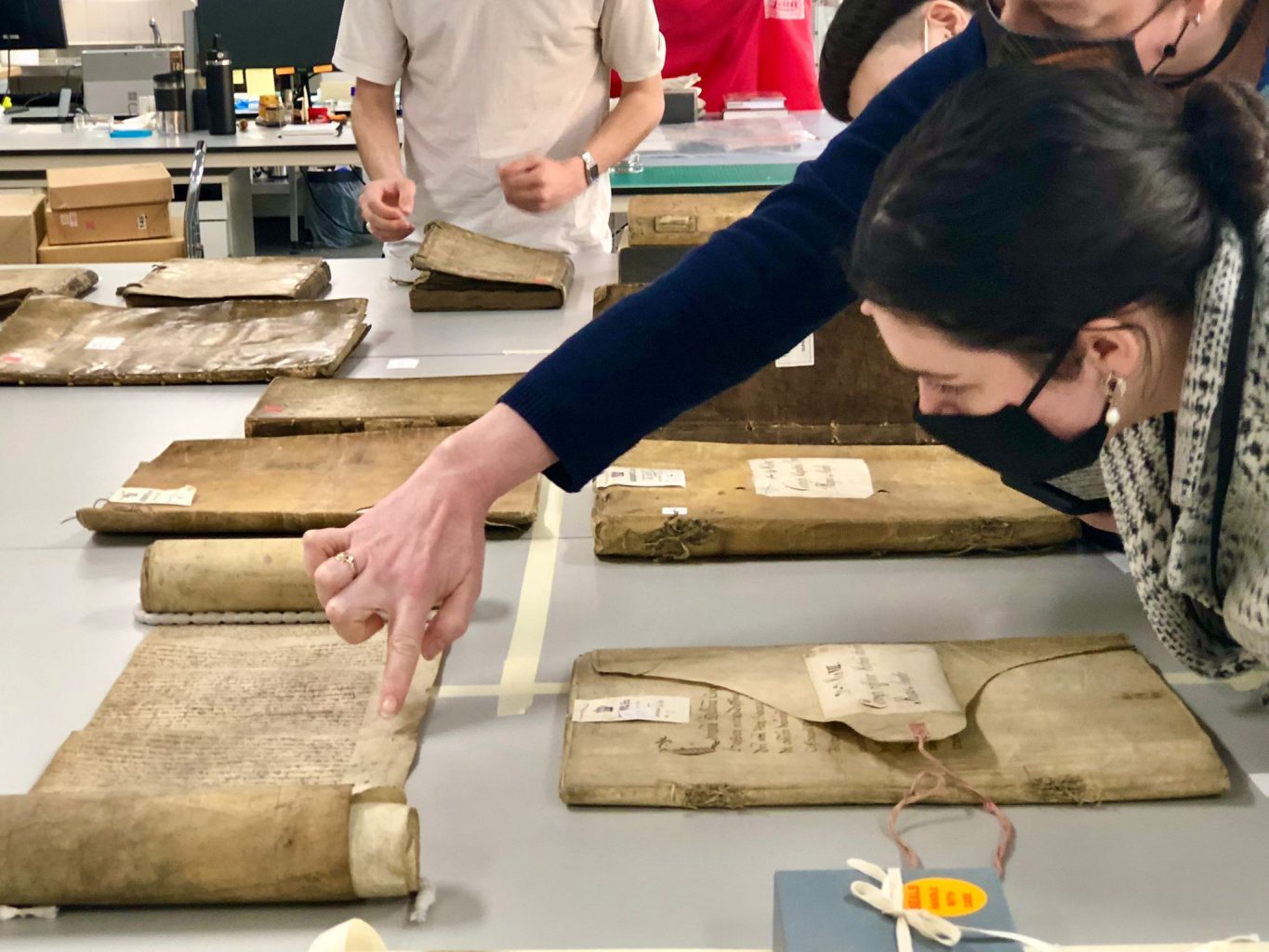
Over the course of two days, our class had the chance to step into many different spaces, from the cool order of The National Archives to the bustle and whirr of Harmatan, and the range of leather objects at the Leather Conservation Centre has to be seen to be believed. As future book and paper conservators, it has been a delight for us to start to get to grips with the lay of the land of conservation, and with that knowledge we can start to chart a course for ourselves as practitioners. It was wonderful to be welcomed in all these places, and we were all grateful that the conservators and leatherworkers with whom we spoke were happy to share their techniques and insights with us. After the caution and isolation in which we started our studies in conservation, it is exciting to go out and feel the collaborative spirit!
Photo credit: Cristina Biagioni (BA (Hons) Conservation: Books & Paper, Yr 2)


